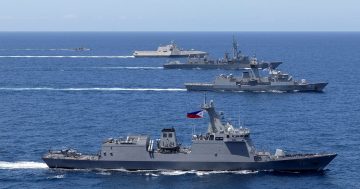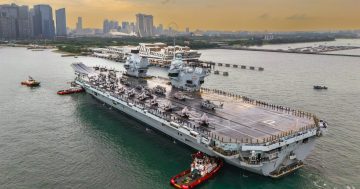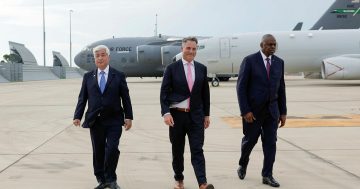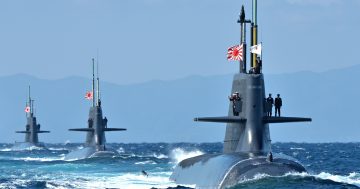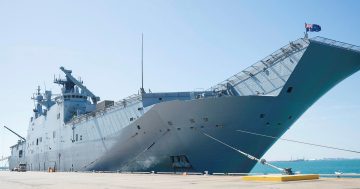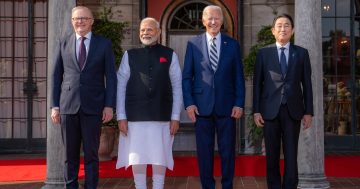Brad Glosserman* says the regional architecture of the Indo-Pacific is undergoing fundamental — and most probably unstoppable — change.
 This is a transitional moment for the Indo-Pacific. Governments are forging new security relationships — the Japan-Australia partnership is the leading edge, as various European Governments jostle for inclusion.
This is a transitional moment for the Indo-Pacific. Governments are forging new security relationships — the Japan-Australia partnership is the leading edge, as various European Governments jostle for inclusion.
New institutions are emerging, from AUKUS to the Quad in the security sphere and at the same time, economic configurations include the Comprehensive and Progressive Agreement for Trans-Pacific Partnership (CPTPP) and the Regional Comprehensive Economic Partnership (RCEP).
How did we get here? There are several explanations.
Realists insist that rising powers create instability, triggered either by their ambition or the hegemon’s insecurity.
For others, the unravelling of the architecture of coexistence, in which China provided markets and the United States provided security, was the problem.
To my mind, there are still more basic explanations.
First you need a threat, a source of instability big enough to motivate States to act.
Until recently, China did not fit the bill.
China has been rising for decades and while that created concern, there wasn’t concerted action to balance against it until Xi Jinping took power.
He inherited a powerhouse economy and a modernising military and married them to ambition and vision, a Belt and Road Initiative that girdled the globe, to pursue the China dream.
His ascension and his muscular foreign policy unnerved Governments worldwide. If the dream belonged to the nation, it is Xi who acted to make it real.
The elimination of rivals, the consolidation of power, and efforts to entrench himself in office make plain that he is a singular world-historical individual who drives decision-making in Beijing.
That security threat has been magnified by perceived unreliability on the United States. It’s tempting to blame Donald Trump for this.
He created considerable unease with his disdain for alliances, contempt for multilateralism, and narrowly-defined view of US national interests, but concern predates his Administration.
The US refusal to ratify the Trans-Pacific Partnership, a strategic agreement masquerading as a trade deal that Washington was instrumental in negotiating, is the most glaring example.
That was President Barack Obama’s fault.
The failure to ensure that China honoured the purported agreement to withdraw its forces from Scarborough Shoal was another blow to US credibility.
Trump’s mercurial and transactional approach to policy crystallised fears and left allies and partners wondering what might be next.
While the worst predictions did not come true, the damage was done. Governments around the region know that even if Trump departed, Trumpism remains.
His foreign policy mindset could reassert itself in Washington even if he does not return to power.
More alarming though, is a realisation that even the traditionally-minded President Joe Biden can still unsettle the status quo.
The withdrawal from Afghanistan rattled those allies who approved of the decision but were alarmed by the incompetence of its execution and the lack of consultation.
The persistence of Trump’s thinking about economic security, manifest most plainly in tariffs that remain in place against allies, is another source of concern.
The abrupt cancellation of the France-Australian submarine agreement and the substitution of a UK-US deal, reinforce a belief that Washington’s field of vision is narrowing and that allies and partners play increasingly bit roles.
A third factor that shaped the region’s evolution was the tenure of Japanese Prime Minister, Shinzo Abe.
His was one of the most remarkable second acts in world politics.
After a brutal failure during his first term, he returned for a period of stability, energy, and creativity unrivalled in Japan’s modern history.
The fact that Abe (pictured) stayed in office as long as he did — he claimed the record for the longest-serving PM in the country’s history — transformed perceptions of Japan.
His determination to modernise the country’s national security bureaucracy and subsequent commitment to using that power and purpose to support a wobbling regional order yielded institutions — the CPTPP and the Quad, to name but two — pillars of the emerging architecture.
A fourth and final key factor is a conceptual framework, the Indo-Pacific.
Abe championed this concept, but it deserves recognition on its own.
While the idea of an Indo-Pacific strategic space had been employed by US Pacific Command combatant commanders from the late 1980s, Abe elevated that idea to a guiding principle.
The Indo-Pacific is a curious geographical space. China is physically in the middle, but it’s bracketed between two democratic powers.
The inclusion of India as a geopolitical counterweight to China is one of the most obvious intentions of its proponents.
More importantly, that Indo-Pacific frame is a predominately maritime domain and links the strategic space to the trade routes that run through its heart.
The inclusion of the Indian Ocean invites European countries with an African presence to be engaged, expanding the number of countries that can claim an interest in the region.
It is thus an inherently inclusive framework, which allows more countries to participate in regional security affairs.
The key variable appears to have been Abe — which means that our current moment may well result from considerable luck.
Abe was a break with history, and Japan appears to be resorting to kind.
His successor, Yoshihide Suga was in office for just a year. Suga’s successor, Kishida Fumio is popular, but he is a traditional Japanese politician who mediates among factions and plays down his own opinions.
There is mounting evidence that the Japanese public is increasingly inward-focused, cautious, and risk-averse.
Still, trajectories have been set, and that will allow bureaucracies to follow through.
Headwinds will grow, but there is enough momentum and energy to believe that a genuine regional security architecture will emerge.
*Brad Glosserman is Deputy Director and visiting professor at the Centre for Rule-Making Strategies at Tama University, Tokyo. He is the author of Peak Japan: The End of Great Ambitions. He can be contacted at [email protected].
This article first appeared on the PacNet website.


